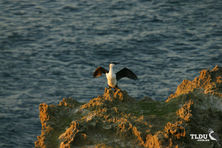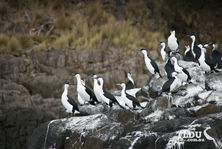
Shoppers Feedback:
Jan 17, 2017
Hello Ros,
I have now paid the invoice, but I would like to write to you just to say a big THANK YOU for getting me the Penguin!
The ChatterMate Penguin became a nice memory for me when I was in New Zealand, and I am so greatful to you for arranging so that I could have it! :-)
Thank you so much!!!!!!!!!!!
Regards,
Malin
Hi Ros,
Many thanks for your very kind email. I really appreciate your prompt reply!
I appreciate your advice regarding the decorations and customs. These are a gift for my daughter’s exchange student family so when she returns home on the weekend I will show her and see if she loves them as much as I do!
Thanks so very much again - I am truly grateful for your kind assistance.
Kind Regards
Bernadette
Ros,
Thanks again for the great customer service. It's a refreshing change!
Best regards,
Trevor
Hey Roz,
Thank you for your emails. Just loved my first order. The cute little Aussie bush critters are going to be used for an office Christmas decoration. My colleagues also liked them and talked about making an order to your site. I'll send you a photo when completed.
I'll be ordering more to send to my daughter's host family in America.
Fabulous service from you.
Kind regards,
Michelle
Thankyou. Order arrived today. One very happy grandson with his new beastly binoculars.
Regards,
Irene
- Home
- Wild Wonders
- Shop
- Aromas of Australia
- Australian Made
- Books
- Book Marks
- Christmas Decoration Sale
- Christmas Decorations
- Clocks
- Drink Holders
- Garden & Outdoor
- Gift Wrapping & Cards
- Home & Giftware
- Jewellery
- Keyrings
- New Products
- Pencils & Pen Holders
- Photo Frames
- Plush Toys
- Plush with Sound
- Sheepskin Rugs
- Stationery
- Stone Carvings
- Toys & Games
- Travel Goods
- Wedding
- Wild Figurines
- Wildlife Safety Products
- Wind Chimes
- Wine Charms
- View All Products
- Wildlife
- Australiana
- Explore
- Contact Us
Black Faced Cormorant

Quick Facts
| Length: | 75 cm |
| Height: | - |
| Weight: | - |
| Colour: | Black and white with a naked black face. Upper parts also black, underparts are white with a black m |
| Habitat: | Coastal waters, large bays, deep inlets, rocky headlands and islands |
| Food: | Small fish |
| Predators: | - |
| Status: | Vulnerable in VIC. Secure in WA, TAS & SA. Not Present in NSW, NT & QLD |
The Black-faced Cormorant is a large pied (black and white) cormorant with a naked black face. The upper parts are also black, the underparts are white, with a black mark on each thigh. The bill is dark grey, and the eyes are blue-green. The legs and feet are black. This species is also called the Black-faced Shag (shags are strictly marine cormorants).
The similarly sized and coloured Pied Cormorant has a yellow-orange naked face and a paler, grey bill. The Little Pied Cormorant is smaller and has a yellow bill.
The Black-faced Cormorant is found along the southern coasts of mainland Australia and Tasmania, and is common in Bass Strait and in Spencer Gulf, South Australia.
Black-faced Cormorants frequent coastal waters and are found in flocks in large bays, deep inlets, rocky headlands and islands. They seldom visit beaches.
Black-faced Cormorants are sedentary.
Black-faced Cormorants feed on small fish, which they catch by diving from the surface. After fishing, they sit with wings outstretched, apparently to dry their non-waterproofed feathers.
The Black-faced Cormorant breeds throughout the year in large colonies on off-shore islands. The nest is always on the ground, usually of seaweed and grasses on bare rock.
Last Updated: Thursday 9th January, 2014
BirdLife Australia - www.birdlife.org.au
BUSH e-TELEGRAPH
Signup for our monthly newsletter the "e-Telegraph"
Quick Links
Home | The Beginning | About The Land Down Under | Wild Wonders | Advertise on Wild Wonders | Christmas Decoration Sale | Christmas Tree Decorations | Drink Holders | Plush with Sound | Stone Carvings | Wildlife Wine Charms | Freebies | Australian Wildlife | Help Our Wildlife | Australiana | Photo of the Month | Explore The Land Down Under | Contact Us | Legal Notices


